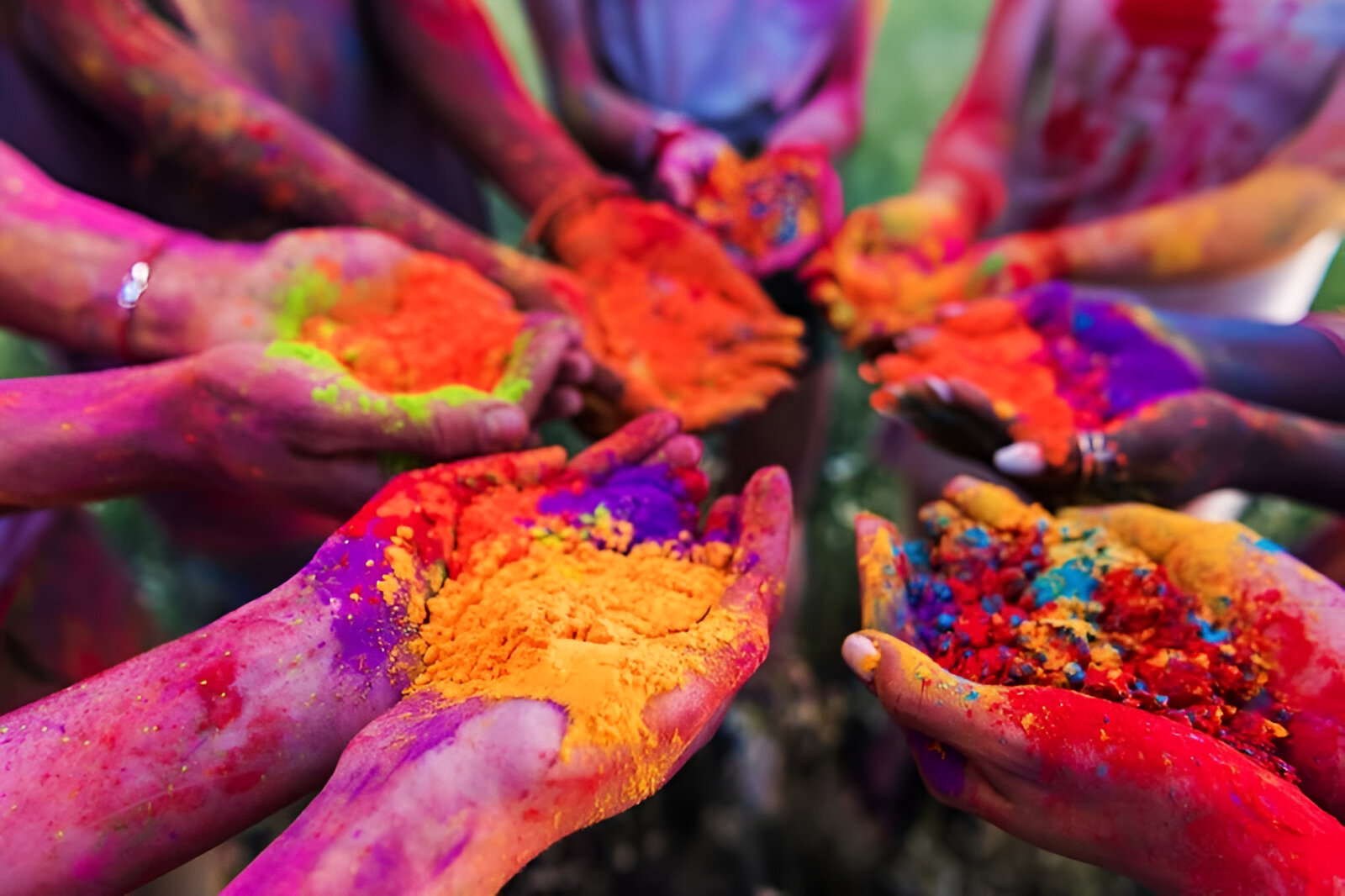Major Events in Chhatrapati Sambhajinagar
Holi: The festival of colors takes on a unique twist in Chhatrapati Sambhajinagar.
- Is the biggest festival of India celebrated all over India and it is one of my favourite festival. Every year we gather to celebrate this festival in Chhatrapati Sambhajinagar because the celebration style of this festival in Chhatrapati Sambhajinagar it is to different and it reminds the La Tomatina festival in Spain. You can take the experience of La Tomatina during this festival in Chhatrapati Sambhajinagar. People splash the colours; throw the water on each other with water cannons in a different manner.
- The playing style of this carnival parade is unique than other carnival parades. On this occasion, the peoples gather by a team. It is kind of war type celebration through bands playing music. In morning parade starts with different 'Mandal' groups of people and start the celebration from 'shaganj' area of Chhatrapati Sambhajinagar. Sitting on Tractor and walking through roads they meet to other 'Mandals' greet meet each other say Happy Holi by throwing the colours through by water cannon 'pichkari ' and 'Mug'. The throwing style of watercolours is too different And the only thing more crazy of this fest a giant water fight as I say by water cannon & mug they enjoy the fest but it reminds you of la Tomatina festival. To witness this festival you have to be in March month in Chhatrapati Sambhajinagar city.
History
One thread stretches back to the legend of Hiranyakashipu, a tyrannical demon king blessed with near-immortality. Only his son, Prahlad, defied him, unwavering in his devotion to Vishnu. Hiranyakashipu, consumed by rage, ordered Prahlad to sit on a pyre with his demon-sister Holika, believing she was immune to fire. But divine intervention shielded Prahlad, while Holika perished. The flames that consumed Holika became symbolic of Holi, celebrating good's triumph over evil.
Another thread intertwines with the playful tales of Lord Krishna. As a child, Krishna, notorious for his love of butter, would form human pyramids with his friends to reach pots of curd hung high by mothers. This mischievous spirit of playful defiance against authority resonates in the playful throwing of colors during Holi.
Over time, these narratives and rituals merged, blossoming into Holi, a festival that transcended its origins. Holi became a celebration of spring, renewal, and unity. Colors exploded in the air, signifying the blooming of nature and the washing away of social distinctions. Laughter and music filled the streets, forging bonds of community and breaking down barriers.
Today, Holi's history remains a vibrant tapestry, woven with threads of mythology, ritual, and pure joy. It's a celebration that embraces playfulness, defies rigid social norms, and reminds us that even the darkest shadows cannot extinguish the spirit of celebration and the triumph of good over evil. So, as you embrace the colorful storm of Holi, remember, you're not just joining a party, you're dancing to the rhythm of ancient stories, celebrating the eternal cycle of renewal, and painting the canvas of life with the joyous hues of human connection.
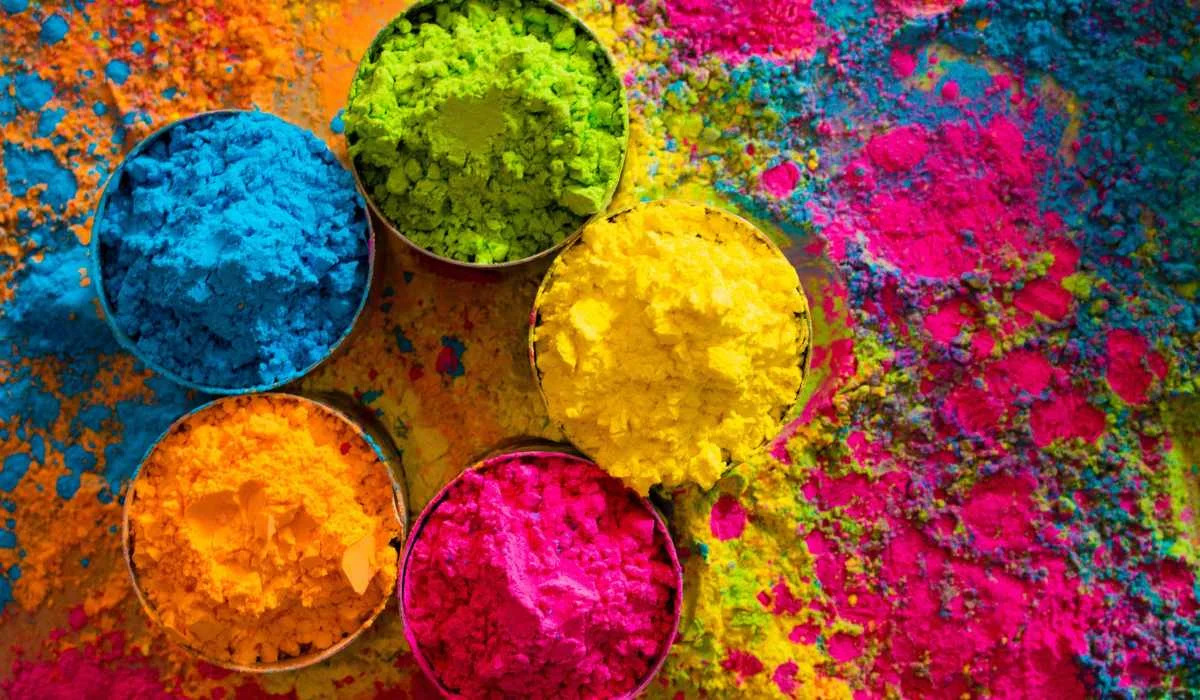
Significance of this festival:
1. Triumph of Good over Evil:
The legend of Hiranyakashipu and Prahlad lies at the core of Holi, symbolizing the eternal battle between good and evil. The burning of Holika represents the cleansing of negativity and the ultimate victory of righteousness. This narrative reminds us that even in the face of darkness, hope and faith can prevail.
2. A Celebration of Spring and Renewal:
Coinciding with the arrival of spring, Holi marks the end of winter and the rebirth of nature. The vibrant colors thrown during the festival mirror the blossoming flowers and the rejuvenated landscape. It's a celebration of new beginnings, fresh starts, and the vibrant cycle of life.
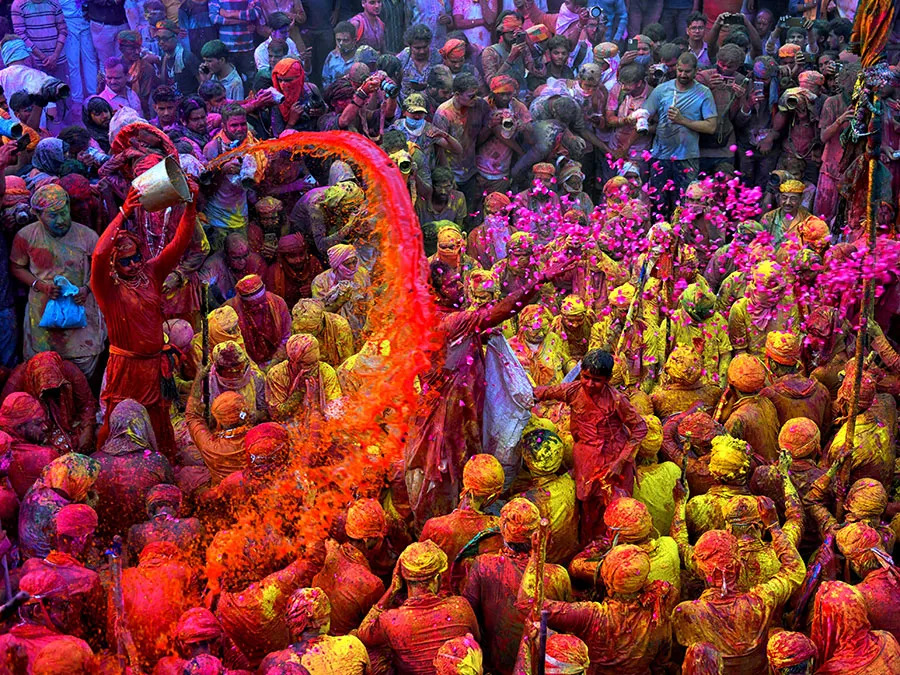
3. A Social Leveler and Unifier:
Holi transcends social barriers and hierarchies. Everyone, regardless of age, caste, or class, embraces the joyful chaos of color, music, and dance. This shared experience fosters a sense of community and unity, reminding us that we are all connected under the same vibrant sky.
4. A Release of Inhibitions and Playfulness:
Holi throws open the doors to a world of uninhibited joy and playful defiance. Adults and children alike shed their everyday roles and embrace the child within, laughing, dancing, and reveling in the pure fun of throwing colors. It's a time to let go of worries, break free from social constraints, and immerse oneself in the simple pleasure of celebration.
5. A Symbol of Forgiveness and Reconciliation:
Holi offers a chance for forgiveness and reconciliation. Past grievances are washed away in the colorful storm, paving the way for fresh beginnings and stronger relationships. It's a beautiful reminder that even the deepest misunderstandings can be mended with open hearts and a spirit of acceptance.
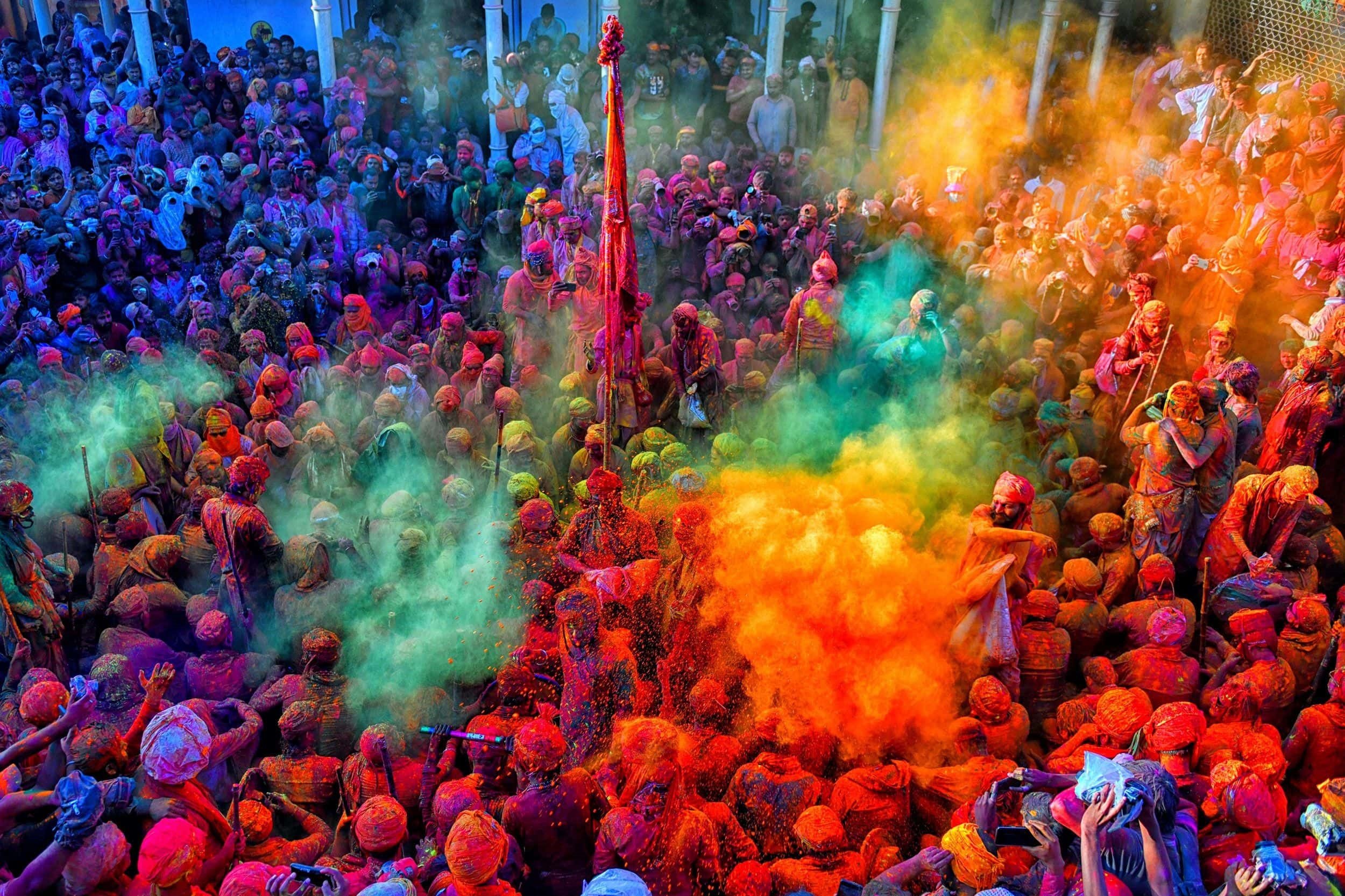
6. A Cultural Tapestry Woven with History and Tradition:
Holi holds immense cultural significance, preserving ancient mythology, folklore, and ritualistic practices. The color choices themselves carry symbolic meanings, with red embodying love and fertility, yellow representing prosperity and optimism, and green symbolizing new beginnings. Participating in the festivities keeps these traditions alive, connecting us to our rich cultural heritage.
Major Activities:
- The heart of Holi lies in the uninhibited throwing of colors. Gulal, natural pigments, and vibrant water guns transform faces and streets into a canvas of laughter and cheer.
- Friends and strangers alike engage in this playful battle, erasing social barriers and embracing the moment with open hearts and colorful splashes.
1. The Color Blitz:
- Energetic beats like dhol drums and pulsating melodies fill the air, setting the rhythm for an irresistible dance floor.
- Traditional dances like Bhangra and Garba take center stage, showcasing regional expressions of joy and camaraderie.
- Everyone, young and old, joins in the revelry, letting their bodies move to the vibrant pulse of the festival.
2. Music and Dance:
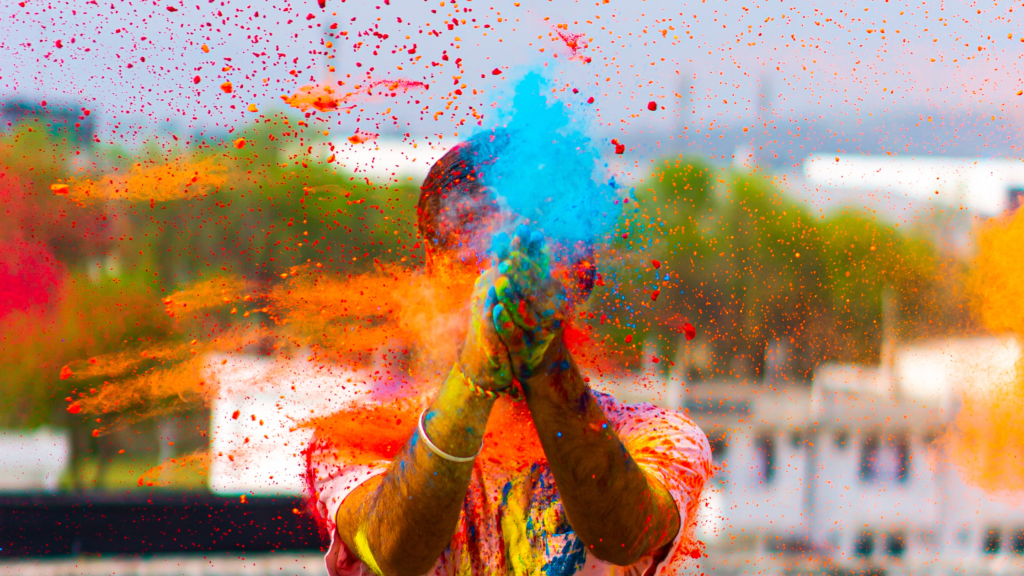
- On the eve of Holi, a symbolic bonfire, known as Holika Dahan, is lit to commemorate the burning of Holika and the triumph of good over evil.
- Devotees offer prayers and sing devotional songs around the fire, invoking blessings for the coming year.
- This ritual signifies the cleansing of negativity and the welcoming of light and joy.
3. Bonfire Ritual:
- Holi isn't just about color and music; it's also a feast for the senses.
- Traditional delicacies like Gujiya, Kachoris, and Thandai, a refreshing milk drink, tantalize taste buds and add to the festive spirit.
- Sharing these sweet treats becomes a way to strengthen bonds and share the joy of the occasion.
4. Sweet Treats and Culinary Delights:

- Holi transcends individual celebrations and becomes a time for families and friends to come together.
- Open houses, gatherings, and picnics provide opportunities for laughter, shared stories, and strengthening community bonds.
- Traditional games like tug-of-war and blindfolded color guessing add a playful element to the festivities.
5. Community Gatherings and Fun Games:
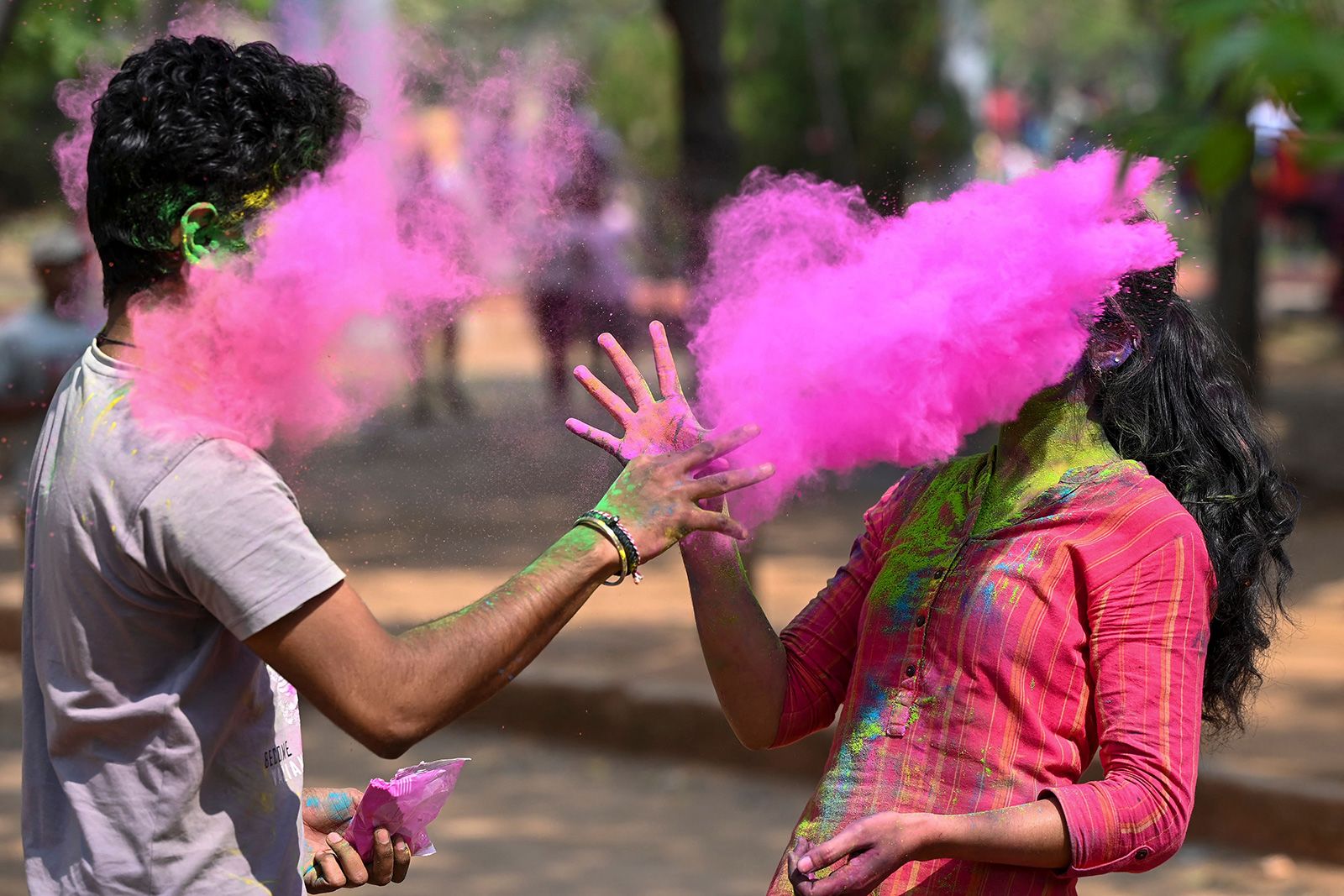
- For some, Holi holds religious significance. Temple visits, offering prayers, and participating in specific rituals like applying sandalwood paste and seeking blessings from elders add a spiritual dimension to the celebration.
6. A Touch of Ritual:

